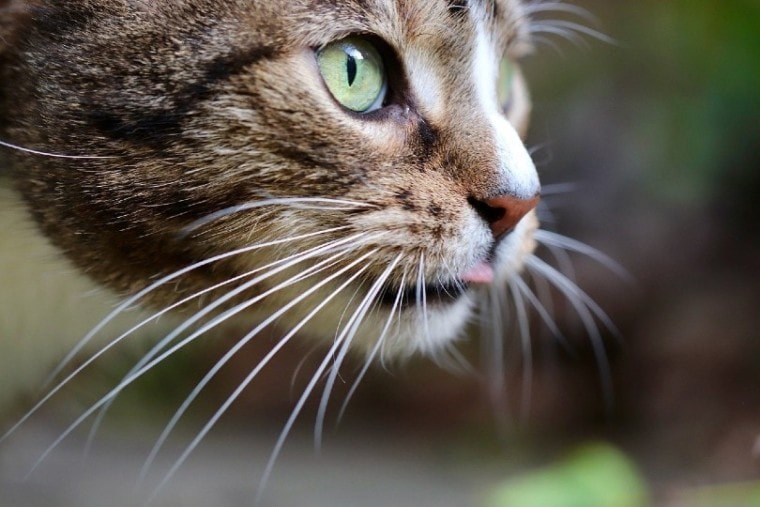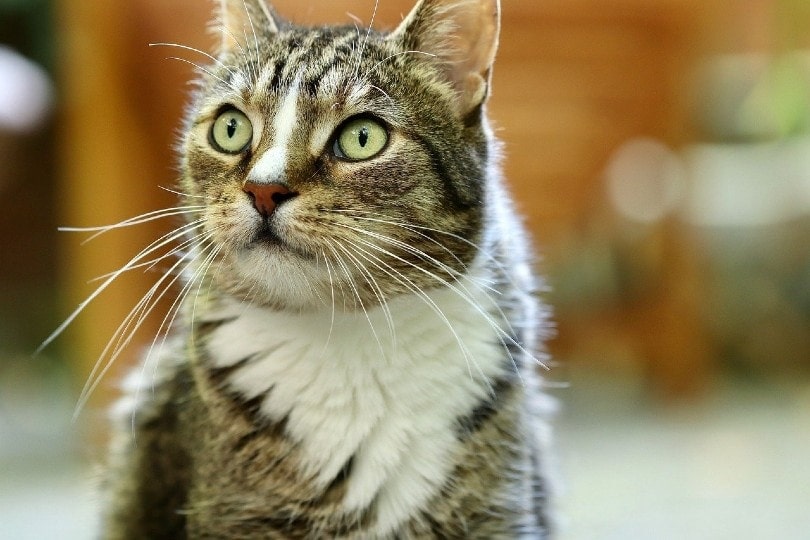
It’s not a stretch to think that a cat’s whiskers are sensitive. After all, they always seem to be moving, especially if your kitty is curious about something. Just because they twitch, it doesn’t mean that they sense pain. They serve a vital function for your pet. However, your cat cannot feel pain in their whiskers because there are no nerves in them. Their purpose is probably best described as ways to avoid pain and discomfort.
The Anatomy of Whiskers
Whiskers are made of a specialized protein called keratin. It’s the same chemical compound that forms many skin modifications, such as claws, feathers, hooves, and hair. Whiskers are simply a thicker and longer kind of hair that grows from the upper layers of the animal’s skin called the epidermis and dermis. It exists within a follicle, although it’s deeper than a single hair.
The pattern and arrangement of the whiskers on your cat vary with the breed. Most cats usually have 12 whiskers total. You’ll find them above your kitty’s upper lips, eyes, around their ears, and even on the bottom portion of their front legs. The longest recorded were the 7.5-inches on a Maine Coon cat named Missi.1 Since they don’t sense pain, you’re probably wondering what they do and the purpose of their location.
The Purpose of Whiskers
Whiskers serve a sensory function that involves a cat’s tactile abilities. They are not unlike an extension of their sense of touch. They use them to sense things and the space around them. While felines have a keen sense of smell, their vision is less acute. They’re better at seeing things up close instead of far away. They also get around much better in the dark than humans.
Therefore, whiskers are part of a cat’s tactile arsenal. Special sensors at the end of them, called proprioceptors, allow the animal to know where its limbs are. They send this information to the brain while also detecting vibrations in the air and the space around them. Combined with their excellent night vision, a feline is a formidable hunter in low-light conditions.
Whiskers can help cats avoid running into things. They can alert them of an opening too small to enter and warn them of potential hazards. The spacing also provides specific intel about where things around them are in relation to their body. Remember, the spacing of each individual whisker helps them pinpoint the spatial relationship of anything in their immediate environment.
Interestingly, cats use their whiskers to communicate their emotions. You know exactly what is on your pet’s mind if the hairs on its back stand up in response to a threat. Felines use whiskers similarly, flaring them out to make them seem larger and like more of a threat. Likewise, when your pet is curious, its whiskers are probably on overdrive. A new scent or object in your home may trigger a similar

response.
Whisker Care
Although they are made of the same protein as their claws, you shouldn’t trim a cat’s whiskers. It’s not that it would hurt your pet. Instead, it would compromise your pet’s ability to navigate its world. The length of the whiskers serves a vital purpose.
Pulling or plucking is another story. It’s not unlike the unpleasant feeling you have if something catches your hair. It’s worse with whiskers because they are embedded deeper in the animal’s skin. You’ll likely find that your cat isn’t very tolerant of your touching them, either. It can overstimulate their senses, a condition known as whisker fatigue.
Final Thoughts
Thanks to whiskers, cats are experts at learning about and navigating their world. These 12 filaments provide them with a lot of information for exploring the conditions around them. They function as protectors and navigators. It’s safe to say that it would be harder for them to get around without them. Besides, doesn’t a furry feline with long whiskers look simply adorable?
Featured Image Credit: Annette Meyer, Pixabay







